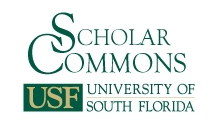Abstract
In recent years, genocide scholars have given greater attention to the dangers posed by climate change for increasing the prevalence or intensity of genocide. Challenges related to forced migration, resource scarcity, famine, and other threats of the Anthropocene are identified as sources of present and future risk, especially for those committed to genocide prevention. We approach the connection between the natural and social aspects of genocide from a different angle. Our research emanates out of a North American Indigenous studies and new materialist rather than Euro-genocide studies framework, meaning we see the natural and the social (or cultural) as inseparable, deeply imbricated, phenomena. We argue that those entities designated natural are often engaged in co-constitutive relations with the social and cultural groups that are the focus of genocide studies. Simply put, groups become what they are through interaction—or symbiogenesis—with their natural world(s). Symbiogenetic destruction, then, is the destruction of this symbiogenesis. We use this term to draw attention to how relations with more-than-human entities are integral components of the ongoing formation of group life, and how they are put at risk by genocide. In particular, we examine testimony that centers on the relationship between Khmer people and rice, including rice cultivation and consumption, as it was impacted by the Khmer Rouge. In so doing, we highlight the cultural consequences of social/natural death in the Cambodian genocide.
Acknowledgements
We are grateful for interactions with Theodore Fontaine, David Courchene, Mary Courchene, Carrie Perreault, David Rundle, Daniel Highway, and other Indigenous Survivors and Elders who have helped shape our thinking. The paper has also benefited from the insight and support of Alexander Hinton, Xijuan Xia, Theresa de Langis, Chhay Visoth, Youk Chhang, Ros Sampeou, Ly Sok-Kheang, and Adam Muller. Research for this project was made possible by a Social Sciences and Humanities Research Council of Canada Insight Grant.
DOI
https://doi.org/10.5038/1911-9933.15.1.1805
Recommended Citation
Woolford, Andrew; June, Wanda; and Um, Sereyvothny
(2021)
"“We Planted Rice and Killed People:” Symbiogenetic Destruction in the Cambodian Genocide,"
Genocide Studies and Prevention: An International Journal:
Vol. 15:
Iss.
1:
44–67.
DOI:
https://doi.org/10.5038/1911-9933.15.1.1805
Available at: https://digitalcommons.usf.edu/gsp/vol15/iss1/7
Creative Commons License

This work is licensed under a Creative Commons Attribution-Noncommercial 4.0 License
Included in
Animal Studies Commons, Cultural History Commons, Demography, Population, and Ecology Commons, Food Studies Commons, Holocaust and Genocide Studies Commons, Nature and Society Relations Commons, Oral History Commons, Place and Environment Commons, Social and Cultural Anthropology Commons



